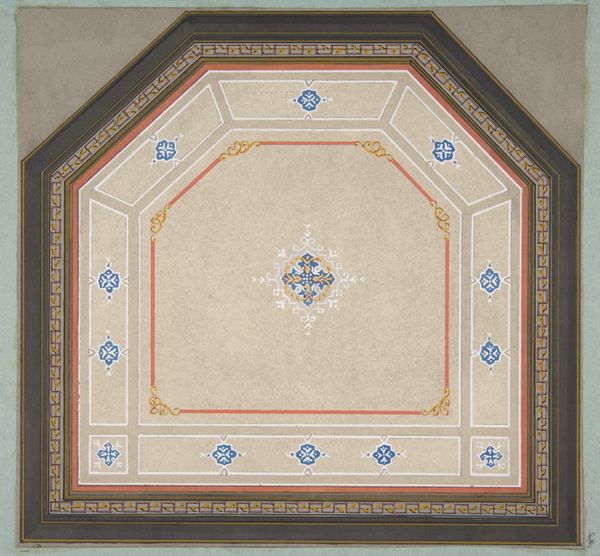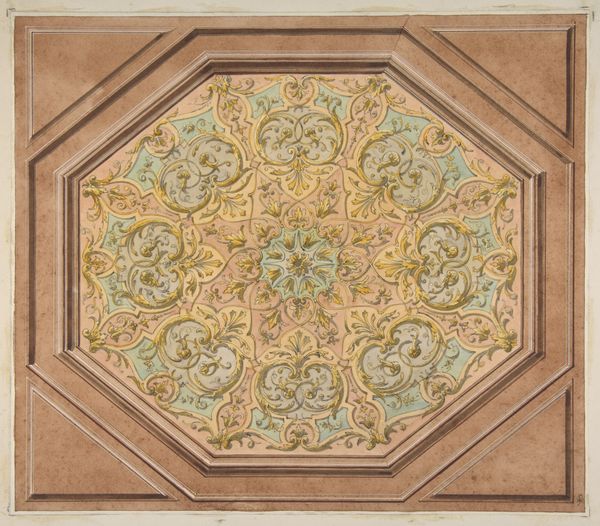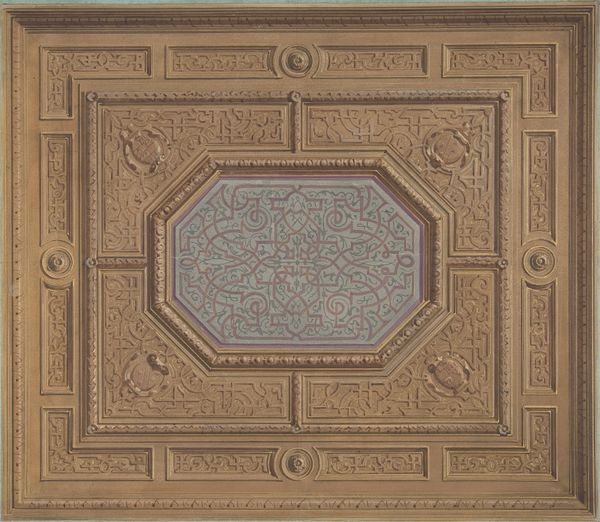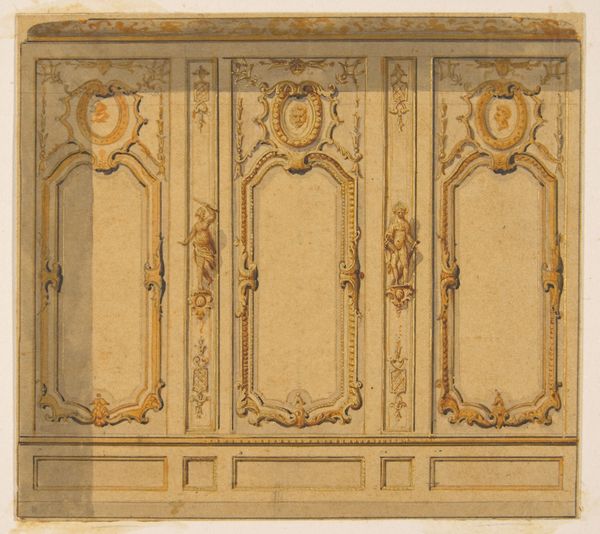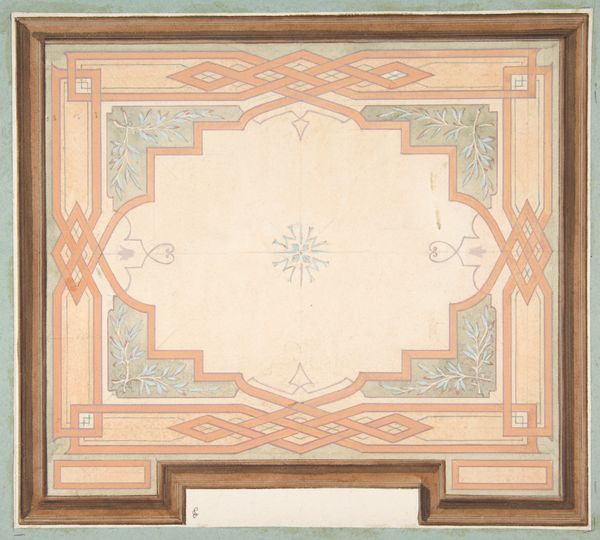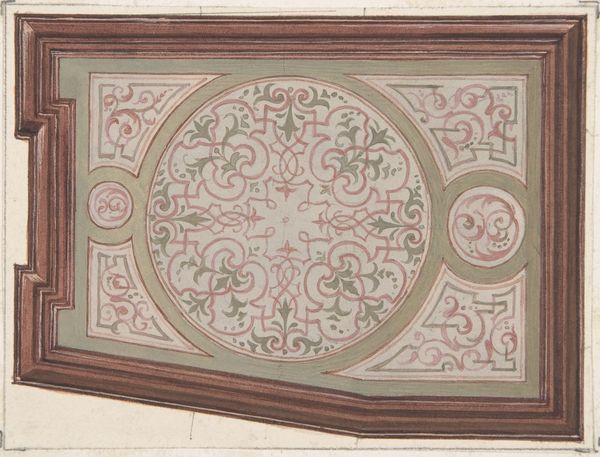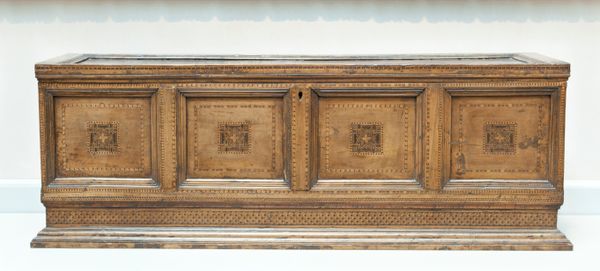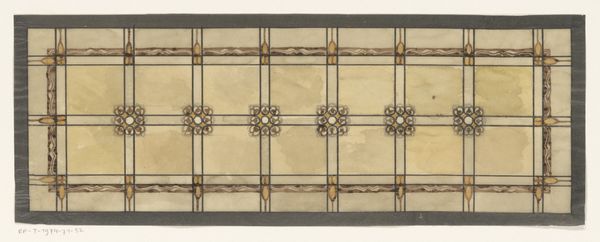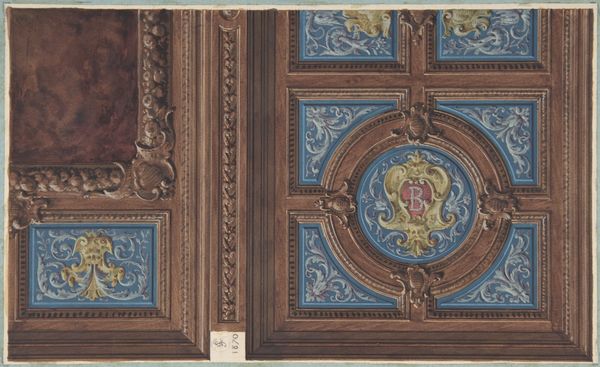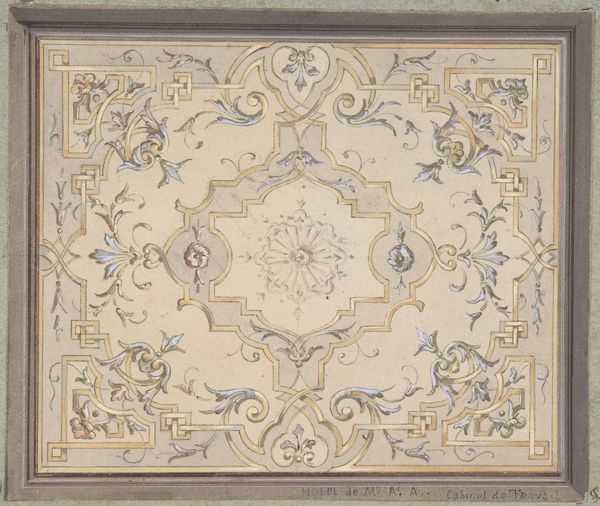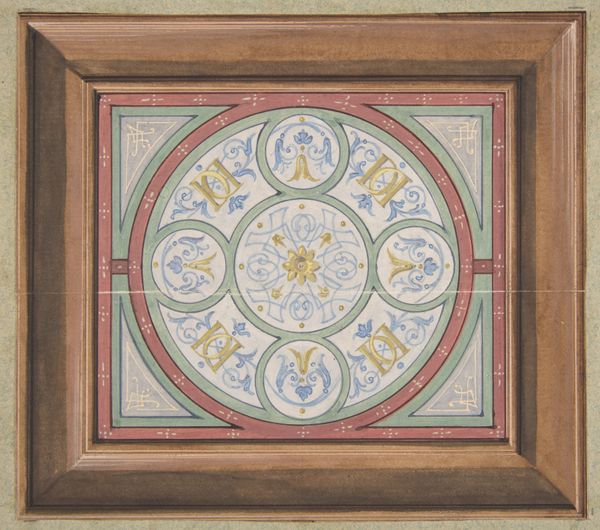
Design for a decorated ceiling 1840 - 1897
0:00
0:00
drawing, print, architecture
#
drawing
# print
#
form
#
geometric
#
line
#
decorative-art
#
architecture
Copyright: Public Domain
Curator: At first glance, I see a very rigid order, quite classical actually, almost oppressive in its symmetry. Editor: Indeed. We are looking at "Design for a decorated ceiling," an architectural drawing created between 1840 and 1897 by Jules-Edmond-Charles Lachaise, part of the Metropolitan Museum of Art's collection. It's an interesting object, considering the history of interior design and how these spaces were intended to reinforce social hierarchies. Curator: The eye is immediately drawn to the center, with that almost sun-like geometric motif. The drawing's strength is definitely in its precise line work. Editor: Right. Think about the architecture of the period. Public spaces were frequently designed to make occupants feel small, reinforcing ideas of authority, a practice visible here as well. Curator: Do you feel that precision elevates it, or does it restrict the drawing's artistic expression? I mean, look at how the eye travels, getting almost caught up in a game, with the shapes pulling your vision in all directions Editor: It is undeniably beautiful, but I see this as a social artifact rather than a raw expression. It speaks to the aspirations of a class, doesn't it? Displaying taste, order, wealth, those small details… they were signs, communicating privilege and belonging. Curator: Well, without the social function, it may not even have existed. That’s part of art as well. This geometrical pattern really is lovely. Editor: Ultimately, this ceiling design offers a unique window into the intersection of art, power, and social identity during the late 19th century. Curator: And perhaps even to understanding decorative language in itself.
Comments
No comments
Be the first to comment and join the conversation on the ultimate creative platform.
